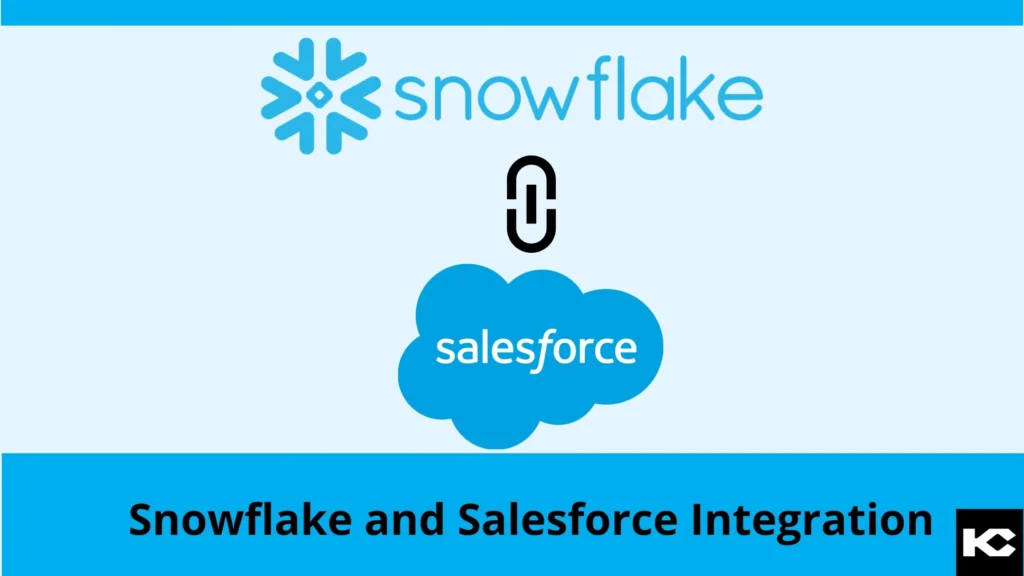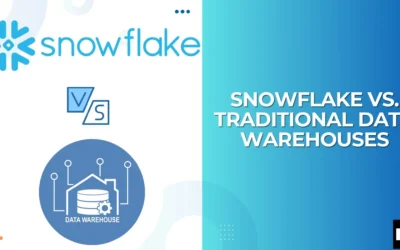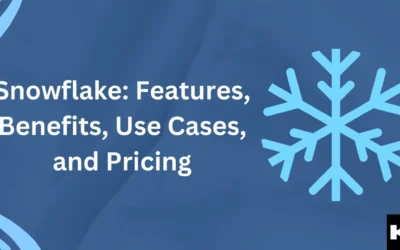Snowflake and Salesforce Integration [2024]
In today’s data-driven business environment, the ability to seamlessly integrate different data platforms can significantly enhance an organization’s efficiency and decision-making capabilities. Snowflake, a leading cloud data platform, and Salesforce, the world’s most popular customer relationship management (CRM) system, together provide a powerful combination for managing and leveraging data. This blog explores Snowflake and Salesforce integration, highlighting its features, benefits, and use cases.
What is Snowflake?
Snowflake is a cloud-based data warehousing solution that provides a single platform for data storage, processing, and analytics. Known for its scalability, performance, and ability to handle diverse data types, Snowflake enables organizations to consolidate their data from various sources and derive actionable insights.
Checkout Snowflake: Features, Benefits, Use Cases, and Pricing
What is Salesforce?
Salesforce is a comprehensive CRM platform that helps businesses manage their customer relationships, sales, marketing, and service operations. By offering tools to streamline business processes and improve customer interactions, Salesforce empowers organizations to enhance their productivity and customer satisfaction.
Integrating Snowflake and Salesforce
Integrating Snowflake and Salesforce combines the strengths of both platforms, enabling organizations to streamline data workflows, enhance analytics, and drive better business outcomes. Here’s how this integration works:
- Data Connectivity:
- ETL Tools: Use Extract, Transform, Load (ETL) tools such as Talend, Informatica, or Fivetran to move data from Salesforce to Snowflake. These tools help automate data extraction, transformation, and loading processes.
- Salesforce Connect: Leverage Salesforce Connect to access Snowflake data directly within Salesforce, enabling real-time data integration without the need for data replication.
- Data Synchronization:
- Ensure that data is kept up-to-date and synchronized between Snowflake and Salesforce. This can be achieved through scheduled ETL jobs or real-time data streaming, depending on business requirements.
- Data Transformation:
- Cleanse and transform data as it moves from Salesforce to Snowflake to ensure consistency and accuracy. This step is crucial for maintaining data quality and reliability for analytics and reporting.
- Data Analysis and Reporting:
- Utilize Snowflake’s robust analytics capabilities to perform in-depth analysis on Salesforce data. Integrate Snowflake with business intelligence (BI) tools such as Tableau, Power BI, or Looker for advanced data visualization and reporting.
Benefits of Snowflake and Salesforce Integration
- Enhanced Data Insights:
- Combining Salesforce’s CRM data with Snowflake’s analytical capabilities allows for deeper insights into customer behavior, sales trends, and operational performance. This holistic view can drive more informed decision-making.
- Improved Data Management:
- Centralize your data storage and processing in Snowflake, reducing data silos and improving data governance. This consolidation makes it easier to manage, secure, and analyze data from multiple sources.
- Scalability and Performance:
- Snowflake’s cloud-native architecture offers unmatched scalability and performance, ensuring that your data processing and analytics can handle increasing volumes of data without compromising speed.
- Real-Time Analytics:
- Enable real-time analytics by integrating Salesforce data with Snowflake. This capability is critical for businesses that require up-to-the-minute insights to make timely and effective decisions.
- Cost Efficiency:
- Optimize costs by leveraging Snowflake’s pay-as-you-go pricing model. Scale compute and storage resources independently to match your data processing needs without incurring unnecessary expenses.
Use Cases of Snowflake and Salesforce Integration
- Sales and Marketing Analytics:
- Combine Salesforce sales data with marketing data in Snowflake to gain a comprehensive view of your sales pipeline and marketing campaign effectiveness. Analyze customer journeys, conversion rates, and ROI to optimize your strategies.
- Customer 360 View:
- Create a unified customer profile by integrating Salesforce CRM data with other data sources in Snowflake. This 360-degree view helps personalize customer interactions and improve customer satisfaction.
- Operational Reporting:
- Generate detailed operational reports by consolidating Salesforce data with financial, inventory, and supply chain data in Snowflake. This integration supports more accurate forecasting, budgeting, and resource allocation.
- Real-Time Customer Support:
- Use real-time data integration to enhance customer support. By accessing up-to-date customer information from Salesforce within Snowflake, support teams can resolve issues more efficiently and provide better service.
- Advanced Predictive Analytics:
- Leverage Snowflake’s integration with machine learning frameworks to build predictive models using Salesforce data. Predict customer churn, sales forecasts, and other critical metrics to stay ahead of business challenges.
Conclusion
Integrating Snowflake and Salesforce unlocks the full potential of your data, providing a powerful platform for enhanced analytics, better decision-making, and improved business performance. By leveraging the strengths of both systems, organizations can gain deeper insights, streamline operations, and drive growth.
Whether you are looking to optimize your sales and marketing efforts, improve customer service, or enhance operational efficiency, the Snowflake and Salesforce integration offers the tools and capabilities needed to succeed in today’s data-driven world.
About Kizzy Consulting:
Kizzy Consulting specializes in helping businesses harness the power of Snowflake and Salesforce integrations. Our team of experts provides tailored solutions to meet your unique needs and drive business success. Contact us at [email protected] to learn more about how we can support your data integration journey.





